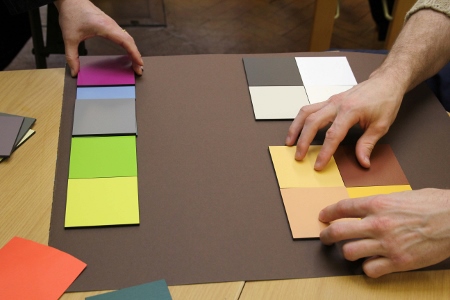In this article we get up to date with the work currently taking place to replace Broadmoor Hospital with a state-of-the-art new psychiatric facility
West London Mental Health NHS Trust is constructing a series of new buildings that will replace the historic Broadmoor Hospital.
Scheduled to open in 2017, this facility will provide fit-for-purpose accommodation for patients and mean staff can improve the way they work and focus more time on therapeutic activities and treatments and less on escorting patients around the 152-year old listed buildings.
Originally known as Broadmoor Criminal Lunatic Asylum, the hospital, built on one of the highest hills in Berkshire, was constructed at a time when the concept of mental illness was still relatively new. When its first patients were admitted in 1867, the main ‘cures’ for mental health conditions were believed to be fresh air and a calming environment.
Typical of hospitals built during the Victorian era, Broadmoor consists of a collection of T-shaped buildings, characterised internally by L- and T-shaped corridors. However, over the years, while mental healthcare has made such huge progress, the majority of the hospital’s buildings have remained the same, becoming increasingly unfit for purpose and unsuitable for the provision of modern-day treatments.
Overcoming limitations
Recognising the existing hospital’s limitations and the importance of investing in mental health, the Department of Health agreed to a major redevelopment in December 2013.
With construction – led by Kier - taking place over a three to four-year period, this project will make the hospital much safer and more efficient, while providing a fit-for-purpose environment for both patients and staff.
Built within the current hospital estate, the new facility will be made up of five new buildings - an entrance building, central building, and three ward units alongside the existing Paddock Centre, which opened in 2005. Its 234 bedrooms will provide space for 217 patients together with a number of decant beds.
Totalling 19,000sq m, this compact space and purpose-built design, from Oxford Architects and LDA Design, will offer improved observation and line of sight. The new buildings will also help staff further embed the clinical model and work towards developing therapies to engage patients and promote recovery. This will not only improve high-secure mental health treatments, but also increase their effectiveness.
With approximately 1375 rooms, the new hospital will contain a variety of up-to-date operational equipment and modern technology, including patient information systems and biometric systems.
Committed to reducing its carbon footprint, the trust has already started work to cut CO2 emissions, reduce energy bills, and increase efficiency. A new energy centre was recently completed with a green roof that absorbs rainwater, provides insulation, and creates a habitat for wildlife.
Works are also underway to install a new combined heat and power (CHP) unit that will burn wood pellets for fuel, eventually allowing the trust to use more economic and environmentally-friendly methods to power the buildings.
Informed decisions
Since the outset, staff and patient engagement has formed a major part of the project and they have been involved in all key decisions, from bedroom design to landscape gardening.
Now, with the scheme almost at its halfway point, the trust continues to work with them to help decide what type of furniture, decoration, and artwork will be required.
Lisa Upton, redevelopment service lead, said: “The feedback we received has been incredibly useful. Some of our plans, such as artwork and interior design concepts, are still being considered and it’s essential there’s a variety of opportunities for staff and patients to be involved and fully engaged throughout the process so that we can incorporate their ideas.”
It’s essential there’s a variety of opportunities for staff and patients to be involved and fully engaged throughout the process so that we can incorporate their ideas
With research illustrating the therapeutic effects art and design can have on those receiving treatment in a hospital setting, the trust has joined forces with a variety of art specialists. So far, this has included designers, architects, and even a motivational speaker who has a wealth of experience in encouraging creativity from marginalised groups.
While the new buildings’ location and layout are a nod to the hospital’s original Victorian ethos of pleasant views and outdoor spaces; its modern materials, interiors, and technology will ensure hospital staff are able to increase therapeutic activity, improve mental health treatments and outcomes, and continue driving up standards of care for many years to come.

Lisa Upton, redevelopment service lead for the project, has involved patients and staff in drawing up the plans for the hospital

